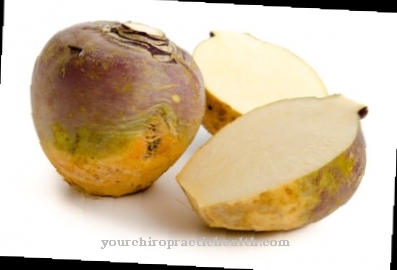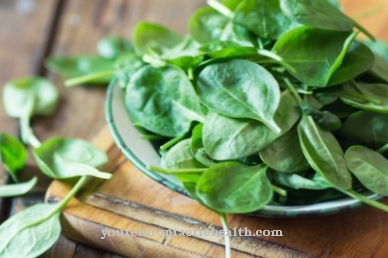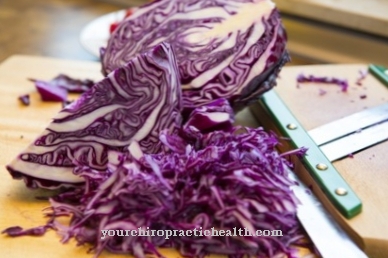The Cardy, a very delicate late autumn and winter vegetable, is botanically related to the artichoke. Typical of the Cardy is that it develops leaves with long, silvery-gray-green petioles that are similar to pale celery and have a slightly bitter, spicy and nutty taste.
What you should know about the Cardy

Cardy is believed to originally come from Ethiopia, but was known to the Egyptians as early as the 4th century BC. It became fashionable in European gardens around 1650, before the 1 to 1.50 meter tall plant with the very decorative, large flowers also spread in Germany.
It tolerates cold and rainy weather, so that it can also be grown in the home garden. The plant prefers deep and nutritious soil. The fertilization can be done with nettle manure and compost. A lot of water is generally required. Just like the artichoke, the cardy belongs to the daisy family, but with the cardy only the bleached leaf veins are eaten and not the flower base. The harvest time is late autumn.
Cardy is rarely available in Germany, however, because the vegetables are now only grown in warm, humid areas, for example in France, Spain, Switzerland, North and partly South America and northern Italy.
In the Swiss region, the cardy is a traditional winter specialty and is often served for a festive dinner on Christmas and New Year's Eve, while cardy is rather unknown in Germany. Con Dioskorides, a former Greek doctor, describes the young, tender shoots as a vegetable similar to asparagus. The stems in particular are used, but they only develop into full flesh if the Cardy plant does not flower. It looks like celery, but the taste of the cardy is milder. The season for fresh cardy begins in Germany at the end of September and ends in December. Most of the imports come from France, Italy and Spain.
Importance to health
The gray-green leaves are harvested from the Cardy, the stems of which contain a lot of vitamin C and thus strengthen the immune system. The bitter substances in the cardy, for example cynarin, have a stimulating effect on digestion. They are also good for the metabolism of the liver and gall bladder and also improve fat digestion.
Inulin is a very well tolerated carbohydrate, especially for diabetics. Furthermore, the Cardy is said to have an appetite-stimulating and cholesterol-lowering effect. There are many reasons for the latter: more cholesterol is excreted, more cholesterol is used for bile acid synthesis and the formation of new cholesterol in the liver cells is also inhibited, so that the cholesterol level should be reduced by more than 10 percent through regular consumption of the Cardy. As a result, vegetables play an important role in preventing arteriosclerosis.
Ingredients & nutritional values
The Cardy contains the bitter substance cynarin, which promotes digestion and stimulates the activity of the bile and other internal secretory glands. The ingredient cynarin gives the dishes a slightly bitter, but also spicy and nutty taste. In addition, the cardy contains the carbohydrate inulin, which is broken down into fructose by enzymes and the acid in the stomach. Therefore, the vegetable Cardy is safe for diabetics. In a fresh cardy plant, the vitamin C content is approximately 10 mg per 100 g of vegetables.
Intolerances & allergies
Cardy, the delicate vegetable, is generally a well-tolerated vegetable, but the inulin it contains, the carbohydrate that is well suited for diabetics, can lead to flatulence in sensitive people. If spices such as caraway or fennel are added during cooking, this can be partially prevented. In some people, the Cardy can also have an allergenic effect, which can also lead to stomach and intestinal discomfort and problems with the skin. In these cases, a moderate consumption of the Cardy is advisable and should not improve, a complete renunciation.
Shopping & kitchen tips
The bleached leaf stalks are consumed with the Cardy. However, the stems dry out quickly and quickly become fibrous. When shopping, you should make sure that they are firm, crisp and not withered. Since they rot quickly, it's important to use them as quickly as possible.
For the preparation, the perennial is divided before the leaves, ends and prickly edges are removed and the stems are washed. These are then cut into pieces and placed in vinegar water, if no immediate use is intended, as this prevents them from turning black. Now the stalks are cooked for about 20 to 25 minutes and cooked until they are still firm to the bite. The stems of the cardy have tough, inedible threads. These are peeled off or pulled off with a knife. The stems of the cardy are considered a delicacy. The cardy is used as a cooked vegetable, but also often used in a juice, tea, dry extract and a tincture.
Preparation tips
The fine aromatic cardy tastes bitter and nutty. Regardless of whether in the steamed, steamed, cooked or deep-fried form, it is a very tasty, healthy vegetable that is an ideal accompaniment to white meat and fish. The artichoke-like taste comes into its own with olive oil, lemon juice and salt. However, the cardy can also be prepared similar to the asparagus: with butter or bechamel sauce and boiled ham.
The blanched cardy cut into pieces can also be used with a little vinegar, salt, pepper, a little sugar and safflower oil to prepare an aromatic, finely-spicy salad that can be refined with shrimp and dill tips. Cardy is just as delicious when fried in batter. This should be sprinkled with grated parmesan cheese. Cardy can also be consumed raw, for example for dipping. It also goes well with baguette bread and goat cheese. The cardy can also be gratinated with blue cheese. The stalks are prepared as usual for this. Then the butter is stirred until frothy, two egg yolks and the cheese are mixed in and the breadcrumbs are added.
Then the mixture is seasoned with the lemon zest, lemon thyme and pepper and everything is put into a mold. The mixture is chilled in the refrigerator. The sticks are then placed next to each other on a tray, the butter is cut into slices about 5 mm thick, the cardy is covered with it and gratinated under the grill. Finally, the cardy is served on the plate and served with pomegranate butter. In the western Mediterranean countries, a bitter liqueur is also made from the cardy plant, which is supposed to stimulate digestion.
























.jpg)



